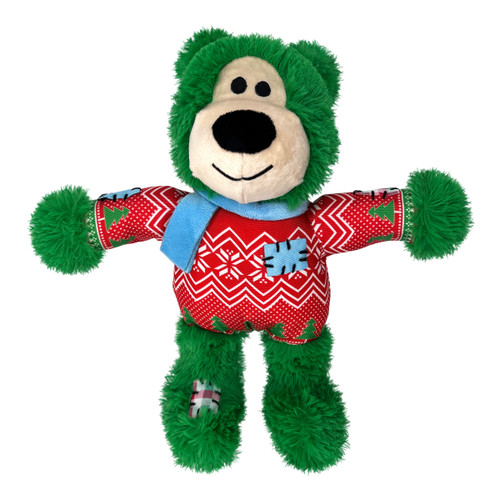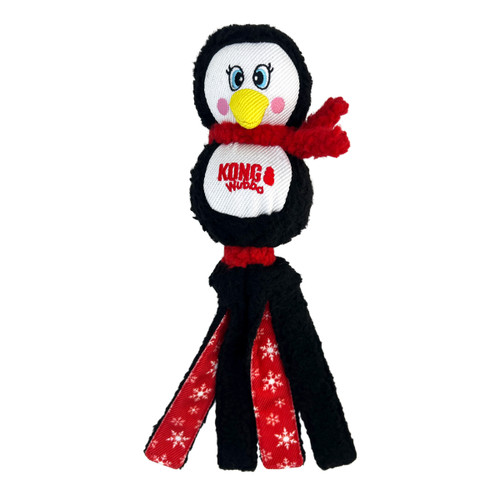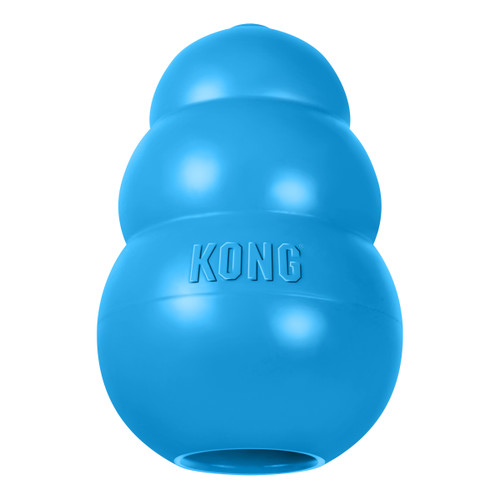

Teaching Your Puppy to Settle and Be Happy at Home
Posted by KONG Company on Apr 20th 2021
Keeping your puppy calm and happy at home is easy when you know the right steps. Understand things you can do to help settle your puppy at home.
Teaching your puppy to settle and to be home alone and happy is one of the most important steps in puppy training, though for many it is also the most overlooked! Dogs are naturally social animals and so being alone does not come naturally to them. Many owners find themselves frustrated as they are unable to go anywhere without company!
It is therefore our responsibility to help our puppies feel as calm and confident as possible while on their own. With some time and patience, you can have your puppy home alone and happy in no time!
Important note: Before discussing the training, it is important to note that puppy’s emotional state needs to come first. Many owners will try and get a jump start on separation training by practicing departures from the first day the puppy comes home. While this is a great idea, in theory, it can lead to further distress as your puppy will feel confused and abandoned from the day they come home! Instead, when you bring a puppy home, for the first few months of your puppy’s life, you should focus on settling them in the space and ensuring they are happy and comfortable before being to leave them.
Step 1: Teaching Confidence Around Barriers
The first step of prepping your puppy for separation is getting your puppy confident around barriers. Having your puppy understand they cannot always have everything they want when they want it will help with not just separation training, but general frustration tolerance and impulse control.
Deciding where your puppy will be left is a crucial step in this process. Most puppy guardians will opt to leave their new puppy in a crate or pen when left, to prevent them from practicing destructive behavior or toileting in the wrong place. Getting them comfortable in their crate will help to prepare them for eventual departures.
When looking to select your crate, you should opt for a crate that is big enough for your dog to stand up, turn around and lie down, but no larger. Though this may seem cruel, there is a practical reason for this! Puppies are taught by their mother at a young age not to toilet in their resting space, and so are less likely to toilet in their crate. If the crate is too large, they are likely to use half for sleeping and half as a toilet! If you want to buy a larger crate for your puppy to grow into, then use dividers to break down the space to help prevent this problem.
If you are planning to use a pen, then you can make this slightly larger. Giving your puppy a place to rest, a place to use the toilet, and even some toys to play with are all acceptable in this space!
Encouraging your puppy to rest in their crate or pen at other times of day (with the door open if your puppy isn’t quite there yet!) will help to build positive associations that this is a place of rest. Giving them a stuffed KONG to lick and chew in their pen will help accelerate the process. While your puppy is resting or chewing, you can practice opening and closing the door to get them comfortable with this, while rewarding them for staying calm.
This can also be done around baby gates and doors. If your puppy is worried about you going to the bathroom, for example, you can scatter some treats outside the door while you are out. This keeps your puppy busy looking for treats while you slip in and out of the bathroom. If you are planning an activity that may take longer, such as getting changed or bathing, giving your puppy a KONG or activity toy to do on the other side of the door will help to build up a positive association with you being on the other side of the door!
Step 2: Leaving
A note on the “cry it out” method: Previously, trainers have advised that we leave puppies to “cry it out” when we leave them. However, modern dog trainers actually advise against this, as it creates more issues than it solves. Leaving your puppy in a sustained state of distress can cause great emotional scarring. Though after your puppy has finished, they may fall silent and appear to no longer be distressed, scientists believe they are in a state of depression known as “learned helplessness”.
Getting your puppy ready for leaving can be one of the hardest things you do! When looking to leave your puppy don’t make your departures very sudden and/or long!
For some puppies, you will need to make your move to leave by standing up and sitting down again. For others, you can progress rapidly through this stage. Looking at your individual pup's body language and working at their rate is key to keeping your pup happy.
Another part of training you may wish to work on is making your leaving routine super boring. Dogs are incredibly intelligent and will very quickly pick up your leaving routine. One way to combat this is to make your leaving cues mean nothing to the dog. For example, putting your shoes on and then sitting & watching TV, or picking up your keys and then putting them straight down again.
When starting to leave your pup, investing in a doggie camera or baby monitor is a good idea as it allows you to monitor your pup's progress. If you are in a pinch, using two phones, tablets, or computers to video call each other can also help as it gives you reassurance your pup is okay.
If your puppy can be trusted with them, leaving it in their safe space with an item that smells like you can be reassuring. Dogs are naturally smell-oriented and will likely find your smell really comforting. Leaving your pup with an old t-shirt you’ve worn the night before, or used socks can really help to relax your pup!
One thing to avoid is to gradually be leaving your pup for incrementally longer periods. Dogs are incredibly smart and will very quickly work out what is happening. When you are first starting out, throw a shorter departure in every now and again to make it easier for your dog.
Summary
Though preparing to leave your puppy can seem like a long and stressful process, it is ultimately one of the most important training plans you will ever go through as it sets your dog up with skills for life! If you’re having trouble with your puppy it is always best to reach out and contact a local rewards-based trainer for tailored help and support.





